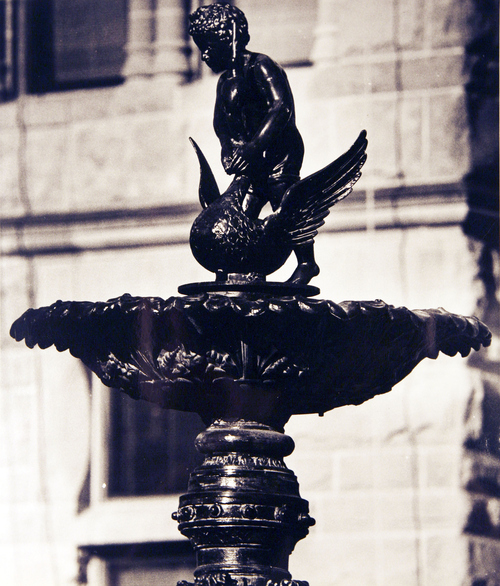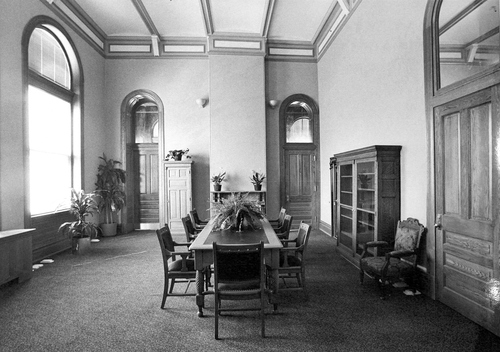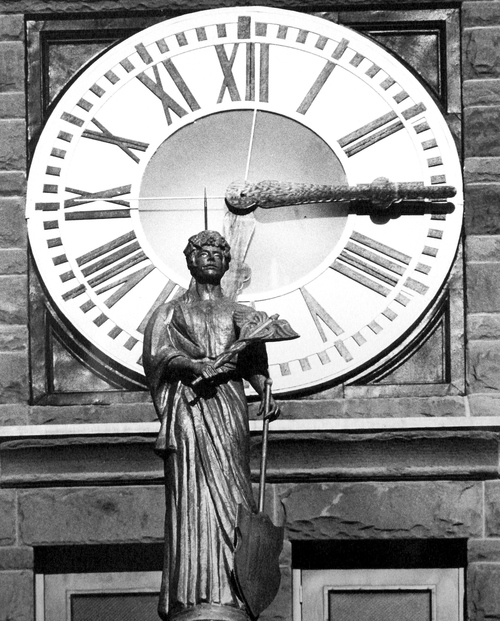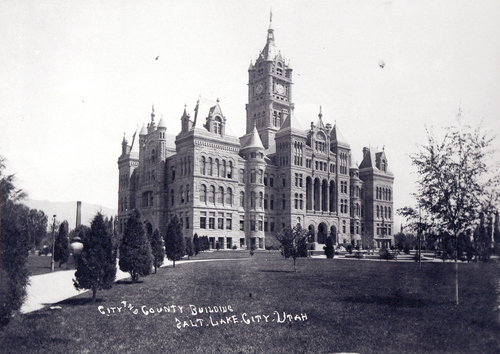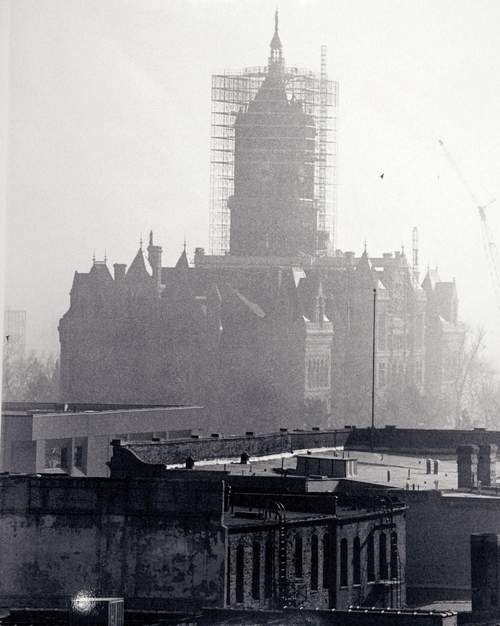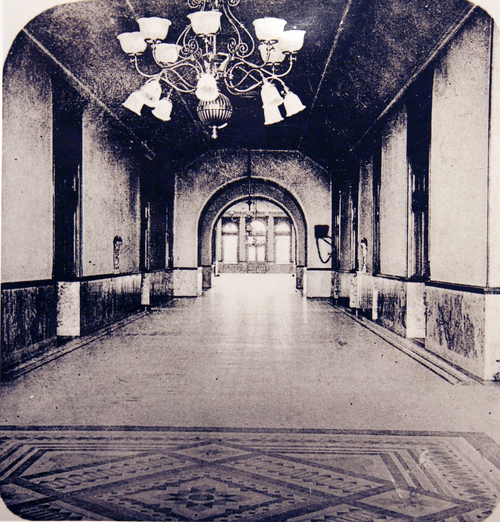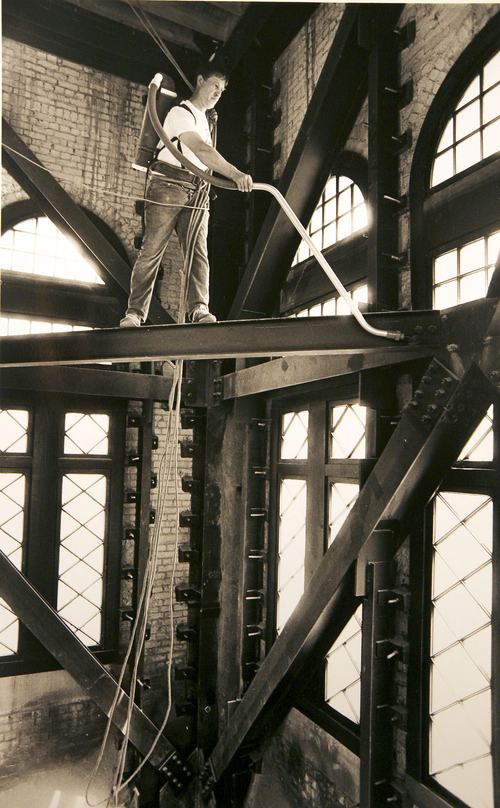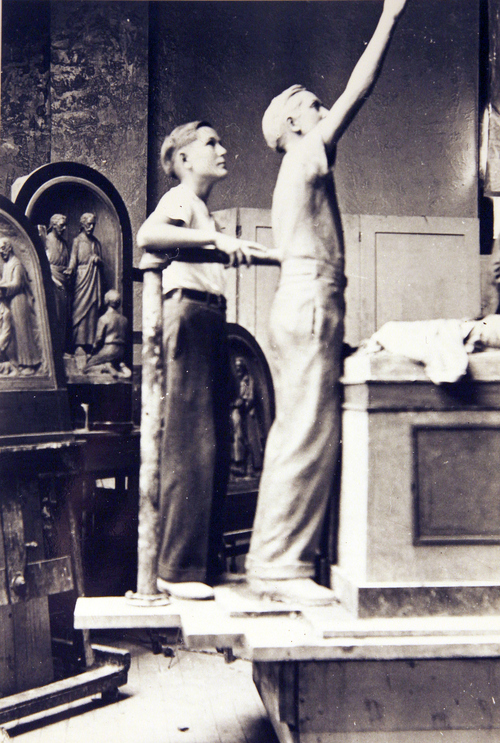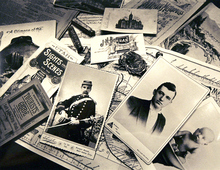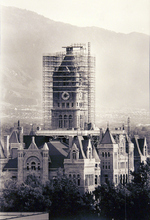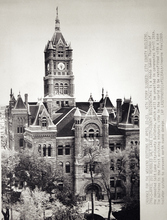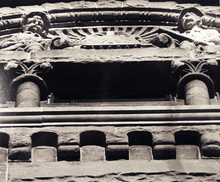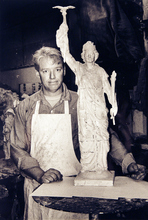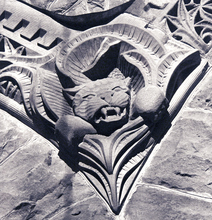(Salt Lake Tribune Archives)
Detail of one of the fountains at the Salt Lake City and County Building on 400 S. State St. The bui
(Salt Lake Tribune Archives)
Items found in the Salt Lake City and County Building cornerstone vault when it was renovated.
(Salt Lake Tribune Archives)
Interior of the Salt Lake City and County Building on 400 S. State St. The building was originally c
(Salt Lake Tribune Archives)
A detail shot of the clock tower on the Salt Lake City and County Building on 400 S. State St. The b
(Salt Lake Tribune Archives)
The Salt Lake City and County building on 400 S. State St. was originally constructed by free masons
(Salt Lake Tribune Archives)
Smog enshrouds the Salt Lake City and County Building on 400 S. State St. during its renovation. The
(Salt Lake Tribune Archives)
Interior of the Salt Lake City and County Building on 400 S. State St. The building was originally c
(Salt Lake Tribune Archives)
Steve Thunell vacuums beams inside the tower of the Salt Lake City and County Building on 400 S. Sta
(Salt Lake Tribune Archives)
The Salt Lake City and County Building on 400 S. State St. The building was originally constructed b
(Salt Lake Tribune Archives)
The Salt Lake City and County Building on 400 S. State St., seen here in 1989, was the first existin
(Salt Lake Tribune Archives)
A young boy stands next to a statue to be placed on the Salt Lake City and County Building on 400 S.
(Salt Lake Tribune Archives)
Beehive detail on the west side of the Salt Lake City and County Building on 400 S. State St. The bu
(Salt Lake Tribune Archives)
Artist Richard Young with a scale model of the statue "Columbia" placed on top of the Salt
(Salt Lake Tribune Archives)
The Salt Lake City and County Building on 400 S. State St. The building was originally constructed b
(Salt Lake Tribune Archives)
Detail of one of the fountains at the Salt Lake City and County Building on 400 S. State St. The building was originally constructed by Freemasons between 1891 and 1894.
(Salt Lake Tribune Archives)
Items found in the Salt Lake City and County Building cornerstone vault when it was renovated.
(Salt Lake Tribune Archives)
Interior of the Salt Lake City and County Building on 400 S. State St. The building was originally constructed by Freemasons between 1891 and 1894.
(Salt Lake Tribune Archives)
A detail shot of the clock tower on the Salt Lake City and County Building on 400 S. State St. The building was originally constructed by Freemasons between 1891 and 1894. Construction of the building was riddled with controversy. During the late 19th and early 20th centuries the City and County Building was the symbol of non-Mormon citizens' open defiance of The Church of Jesus Christ of Latter-day Saints. It was designed to rival the Salt Lake Temple as the city's architectural centerpiece. It is even thought that the building's clock tower and statues were designed to mimic the temple's spires and statue of the angel Moroni.
(Salt Lake Tribune Archives)
The Salt Lake City and County building on 400 S. State St. was originally constructed by free masons between 1891 and 1894. Construction of the building was riddled with controversy. During the late 19th and early 20th centuries the City and County Building was the symbol of non-Mormon citizens' open defiance of The Church of Jesus Christ of Latter-day Saints. It was designed to rival the Salt Lake Temple as the city's architectural centerpiece. It is even thought that the building's clock tower and statues were designed to mimic the temple's spires and statue of the angel Moroni.
(Salt Lake Tribune Archives)
Smog enshrouds the Salt Lake City and County Building on 400 S. State St. during its renovation. The building was originally constructed by Freemasons between 1891 and 1894.
(Salt Lake Tribune Archives)
Interior of the Salt Lake City and County Building on 400 S. State St. The building was originally constructed by Freemasons between 1891 and 1894.
(Salt Lake Tribune Archives)
Steve Thunell vacuums beams inside the tower of the Salt Lake City and County Building on 400 S. State St.
(Salt Lake Tribune Archives)
The Salt Lake City and County Building on 400 S. State St. The building was originally constructed by Freemasons between 1891 and 1894. Construction of the building was riddled with controversy. During the late 19th and early 20th centuries the City and County Building was the symbol of non-Mormon citizens' open defiance of The Church of Jesus Christ of Latter-day Saints. It was designed to rival the Salt Lake Temple as the city's architectural centerpiece. It is even thought that the building's clock tower and statues were designed to mimic the temple's spires and statue of the angel Moroni.
(Salt Lake Tribune Archives)
The Salt Lake City and County Building on 400 S. State St., seen here in 1989, was the first existing historic site in the world to be retrofitted with a base isolator system to prevent earthquake damage. The building was originally constructed by Freemasons between 1891 and 1894.
(Salt Lake Tribune Archives)
A young boy stands next to a statue to be placed on the Salt Lake City and County Building on 400 S. State St. The building was originally constructed by Freemasons between 1891 and 1894. Construction of the building was riddled with controversy. During the late 19th and early 20th centuries the City and County Building was the symbol of non-Mormon citizens' open defiance of The Church of Jesus Christ of Latter-day Saints. It was designed to rival the Salt Lake Temple as the city's architectural centerpiece. It is even thought that the building's clock tower and statues were designed to mimic the temple's spires and statue of the angel Moroni.
(Salt Lake Tribune Archives)
Beehive detail on the west side of the Salt Lake City and County Building on 400 S. State St. The building was originally constructed by Freemasons between 1891 and 1894. Construction of the building was riddled with controversy. During the late 19th and early 20th centuries the City and County Building was the symbol of non-Mormon citizens' open defiance of The Church of Jesus Christ of Latter-day Saints. It was designed to rival the Salt Lake Temple as the city's architectural centerpiece. It is even thought that the building's clock tower and statues were designed to mimic the temple's spires and statue of the angel Moroni.
(Salt Lake Tribune Archives)
Artist Richard Young with a scale model of the statue "Columbia" placed on top of the Salt Lake City and County Building on 400 S. State St.
(Salt Lake Tribune Archives)
The Salt Lake City and County Building on 400 S. State St. The building was originally constructed by free masons between 1891 and 1894. Construction of the building was riddled with controversy. During the late 19th and early 20th centuries the City and County Building was the symbol of non-Mormon citizens' open defiance of The Church of Jesus Christ of Latter-day Saints. It was designed to rival the Salt Lake Temple as the city's architectural centerpiece. It is even thought that the building's clock tower and statues were designed to mimic the temple's spires and statue of the angel Moroni.


